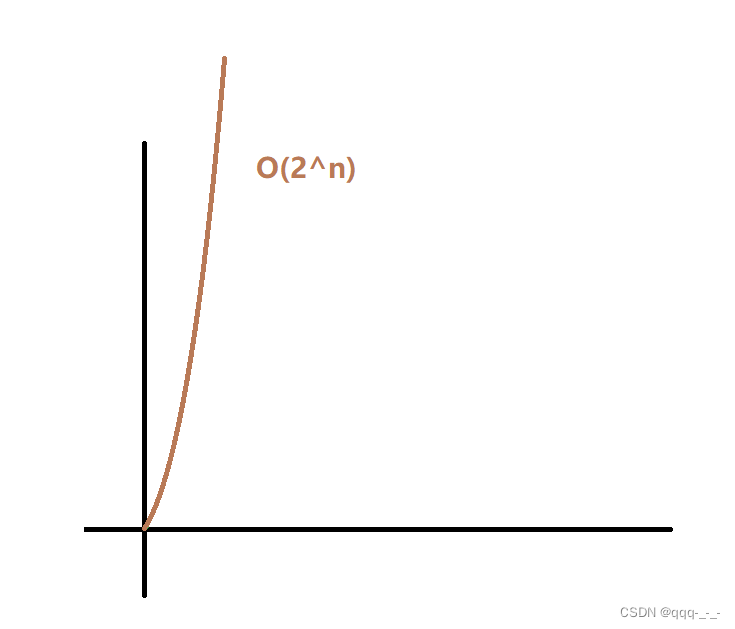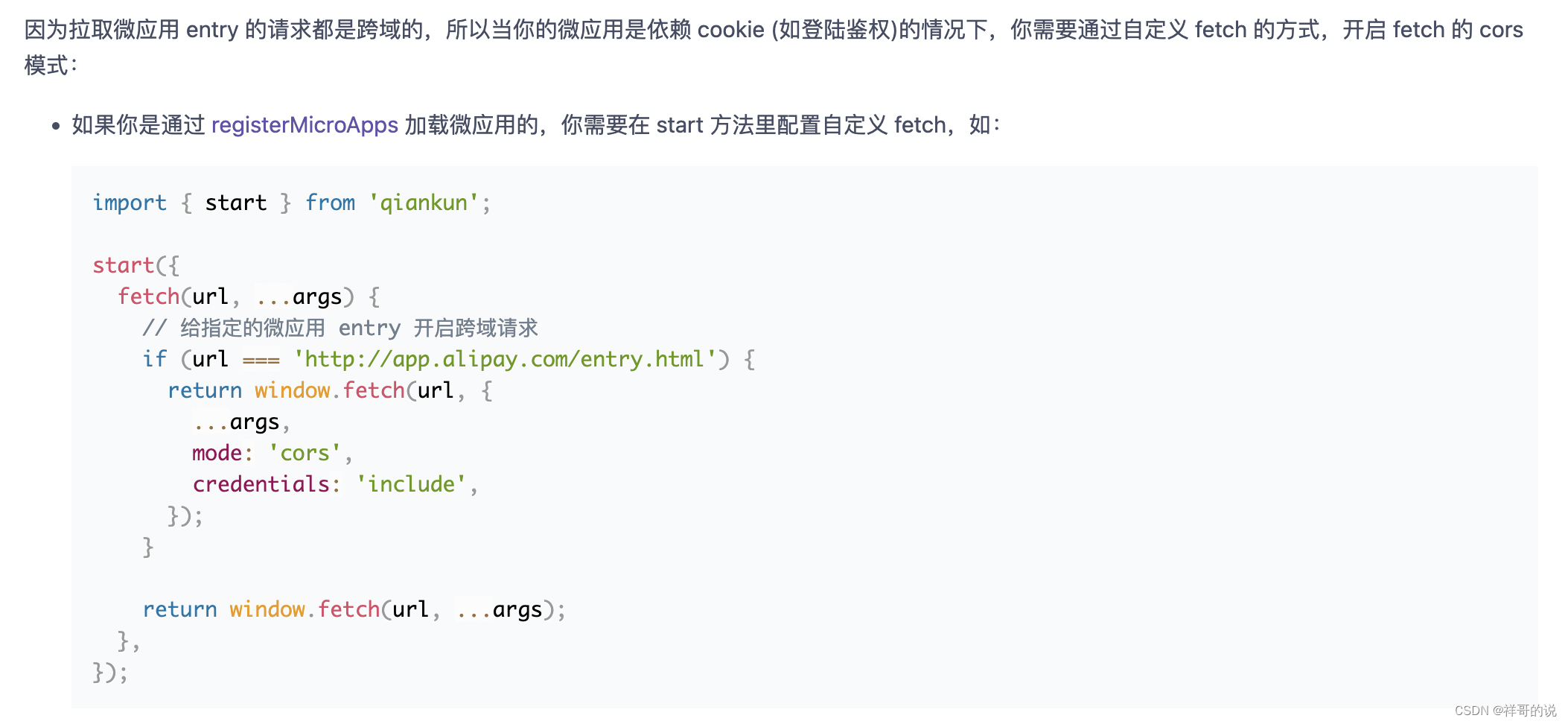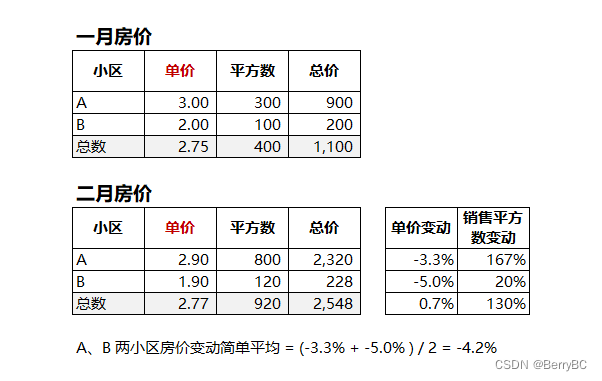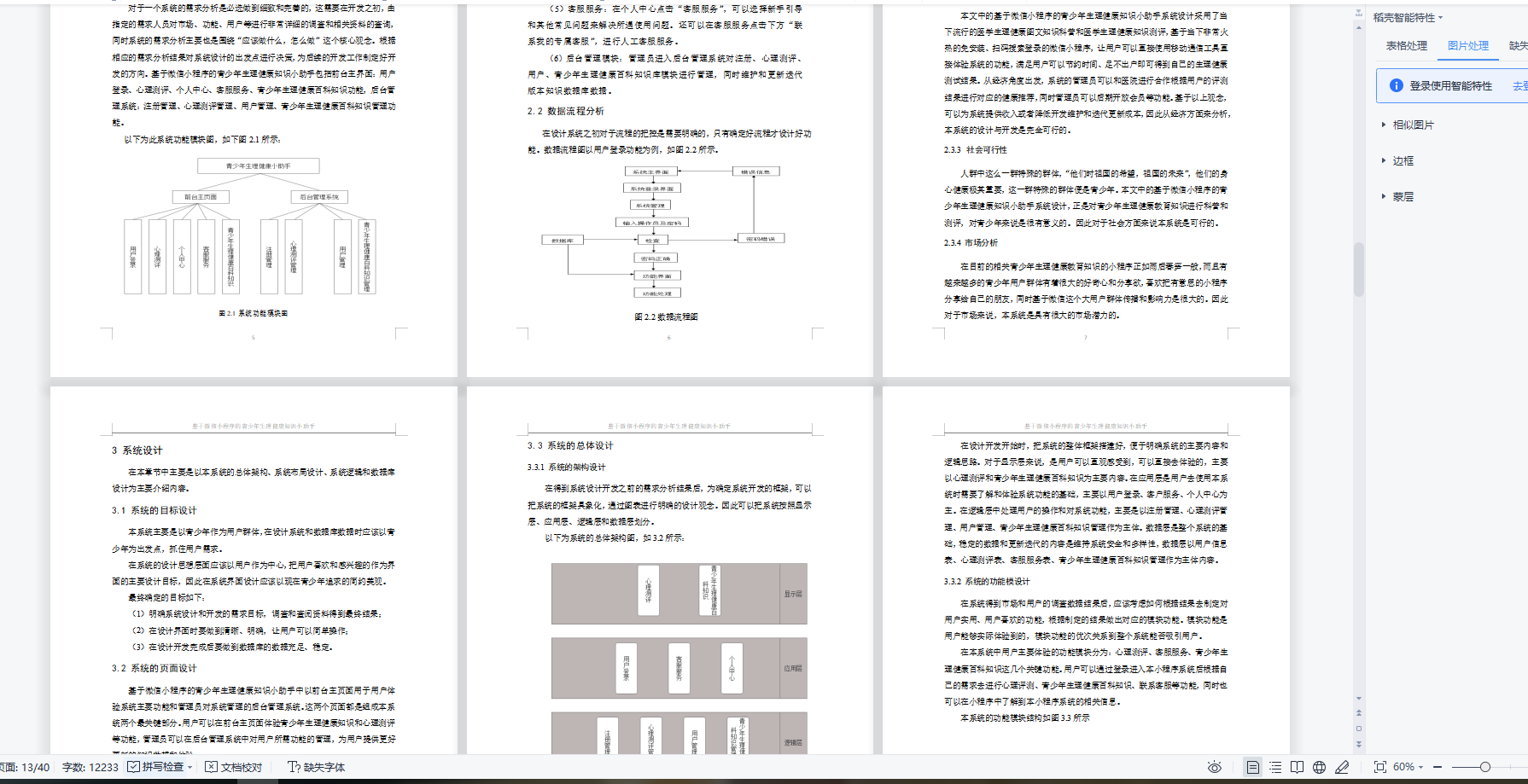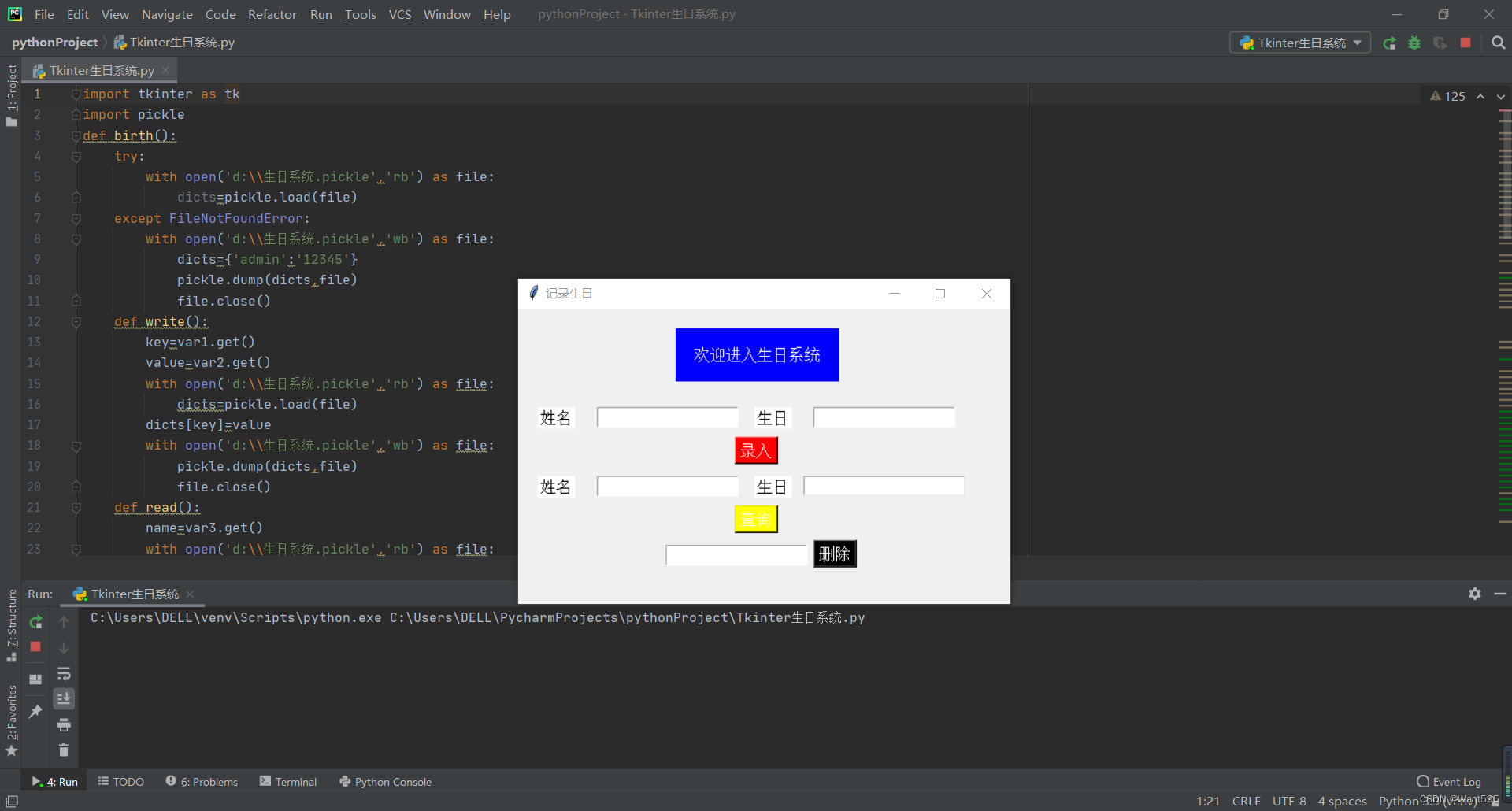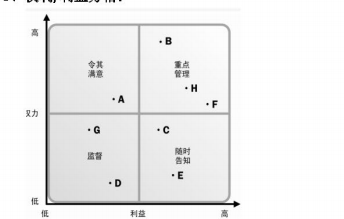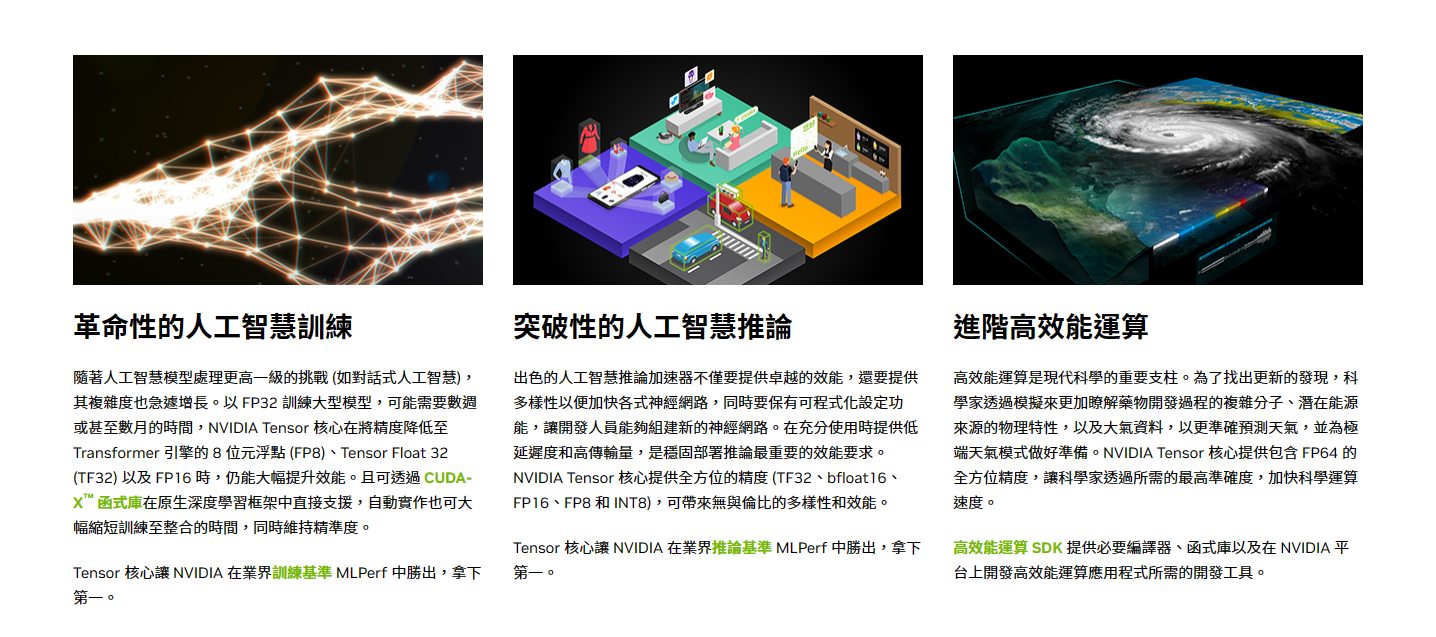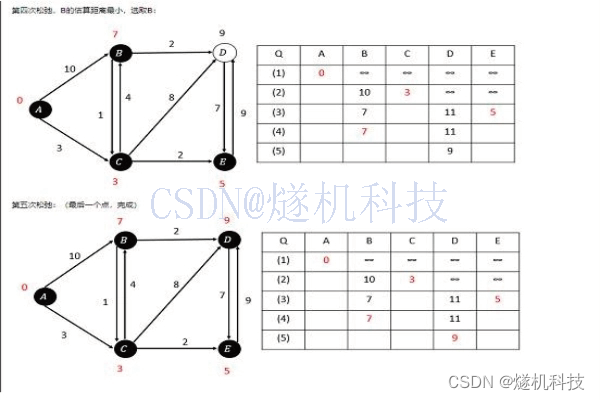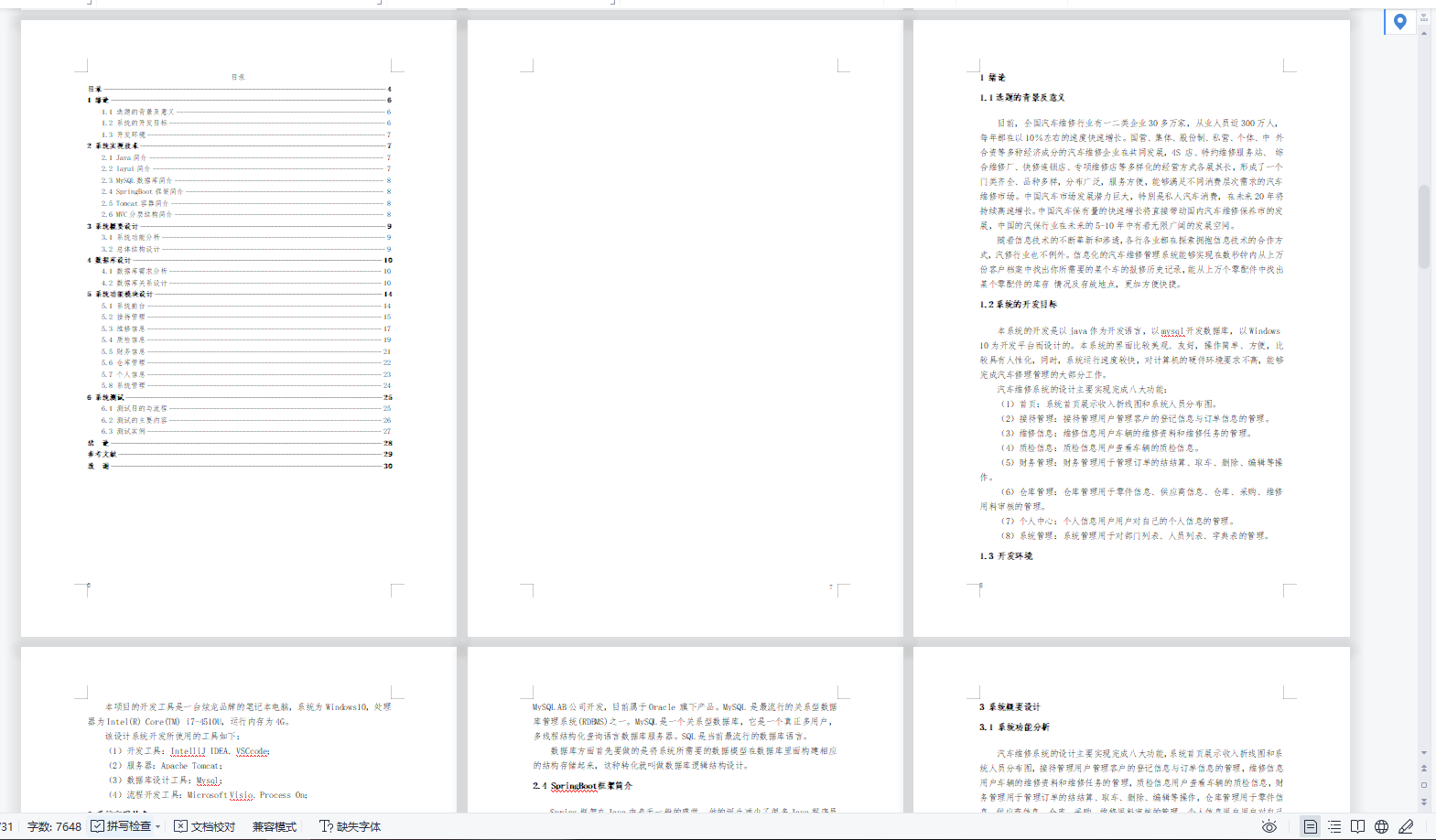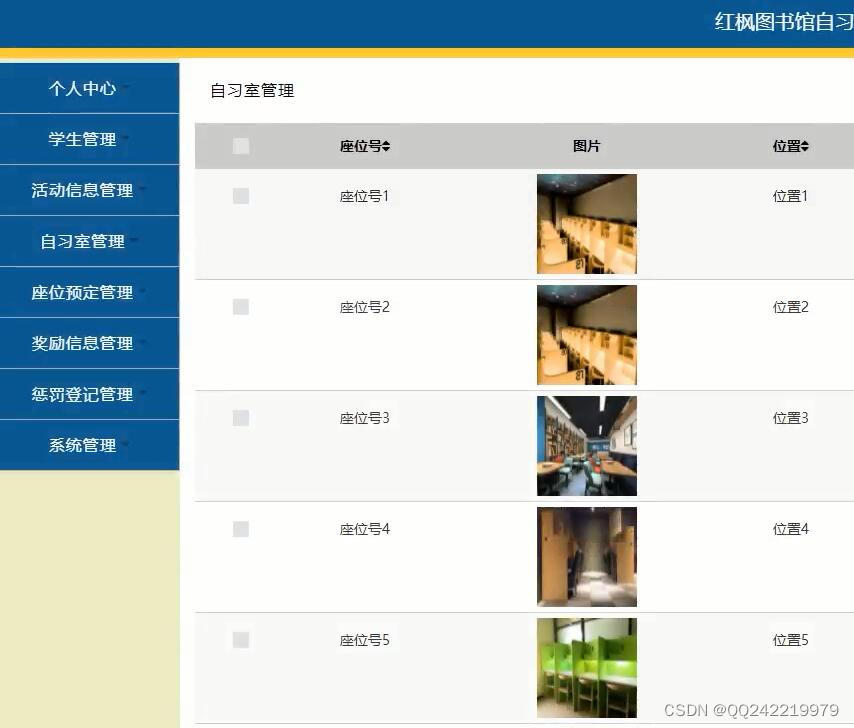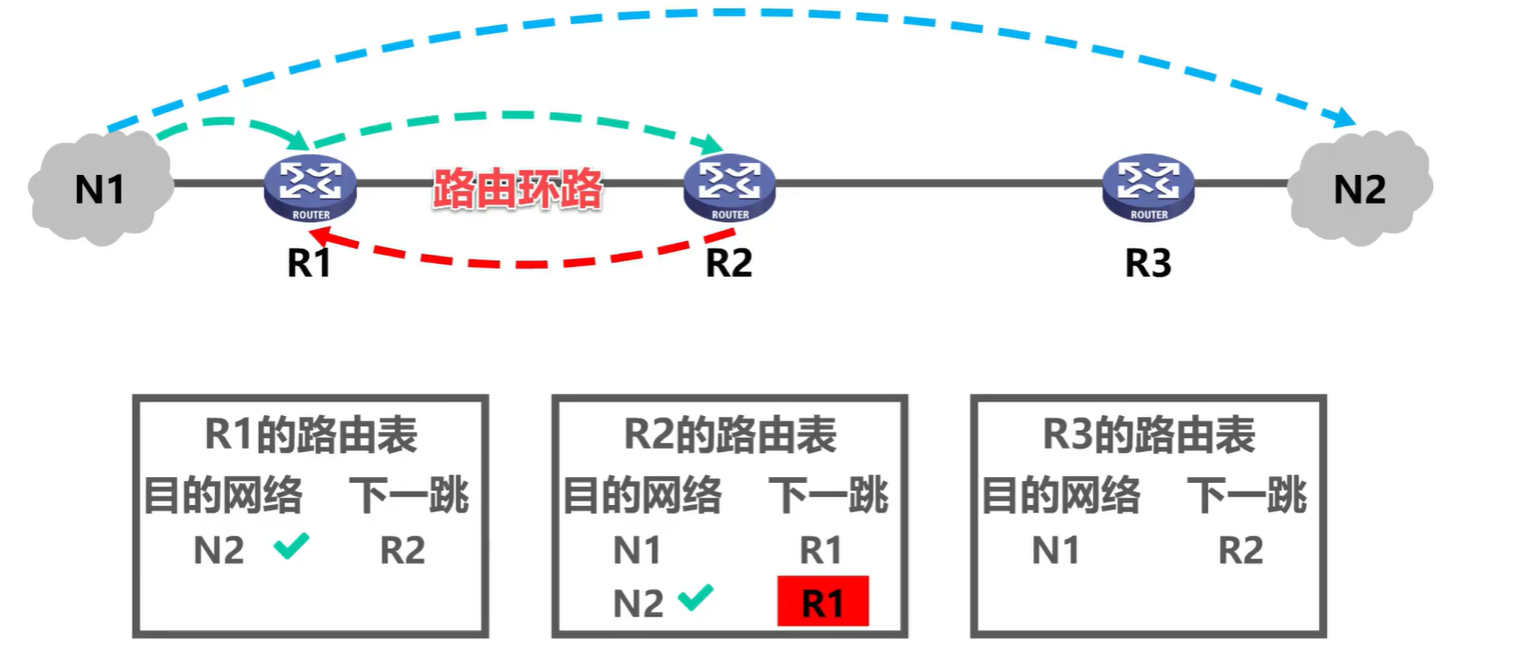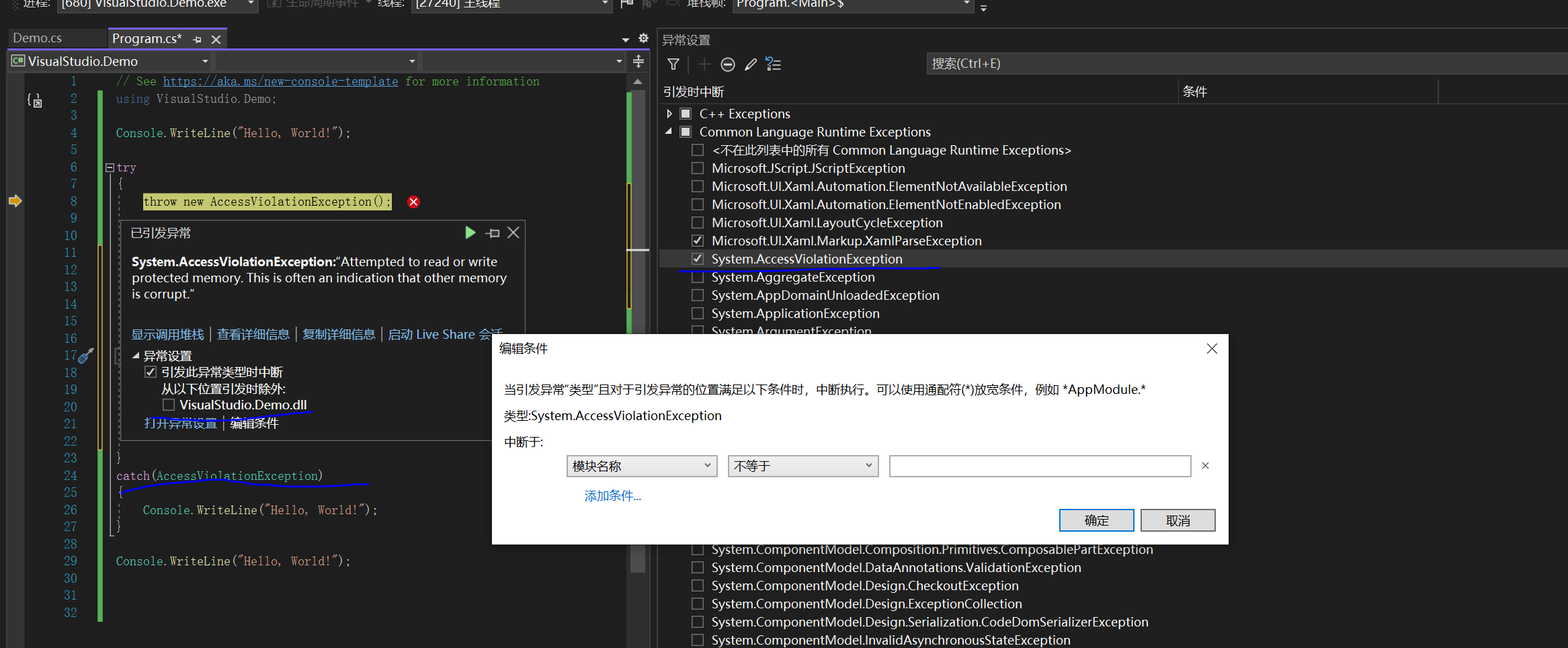前面的博客中,我们介绍了,发起全局事务时,是如何进行全局事务提交的,这篇博客,主要记录,在seata分布式事务中,全局事务提交的时候,服务端是如何进行处理的
发起全局事务提交操作
事务发起者,在所有分支事务执行完毕之后,如果没有发生异常,会进行全局事务提交
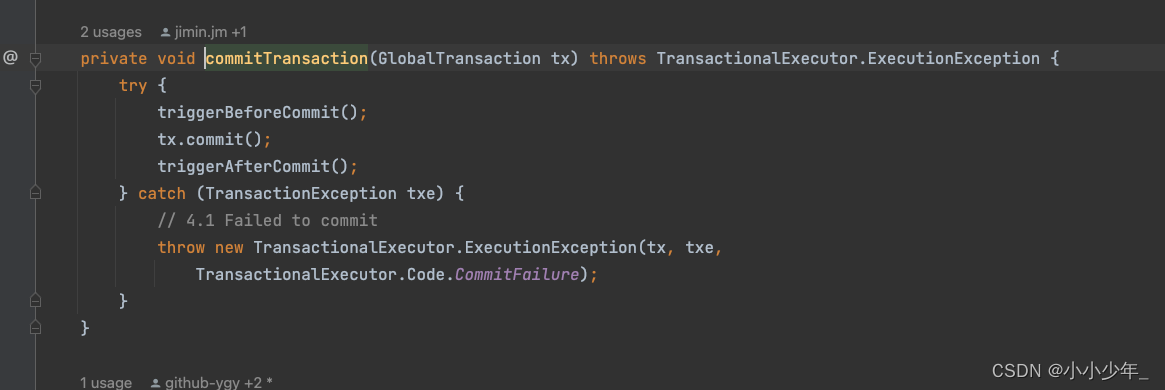


这里就不做过多解释了,前面seata入门和全局事务begin的博客中,有介绍过这里入参的request对象的重要性
服务端接收到请求
前面全局事务begin的源码,介绍过,netty服务端接收到请求之后,是如何执行到这里的,在这里会根据request请求的类型,交给不同的handler来处理
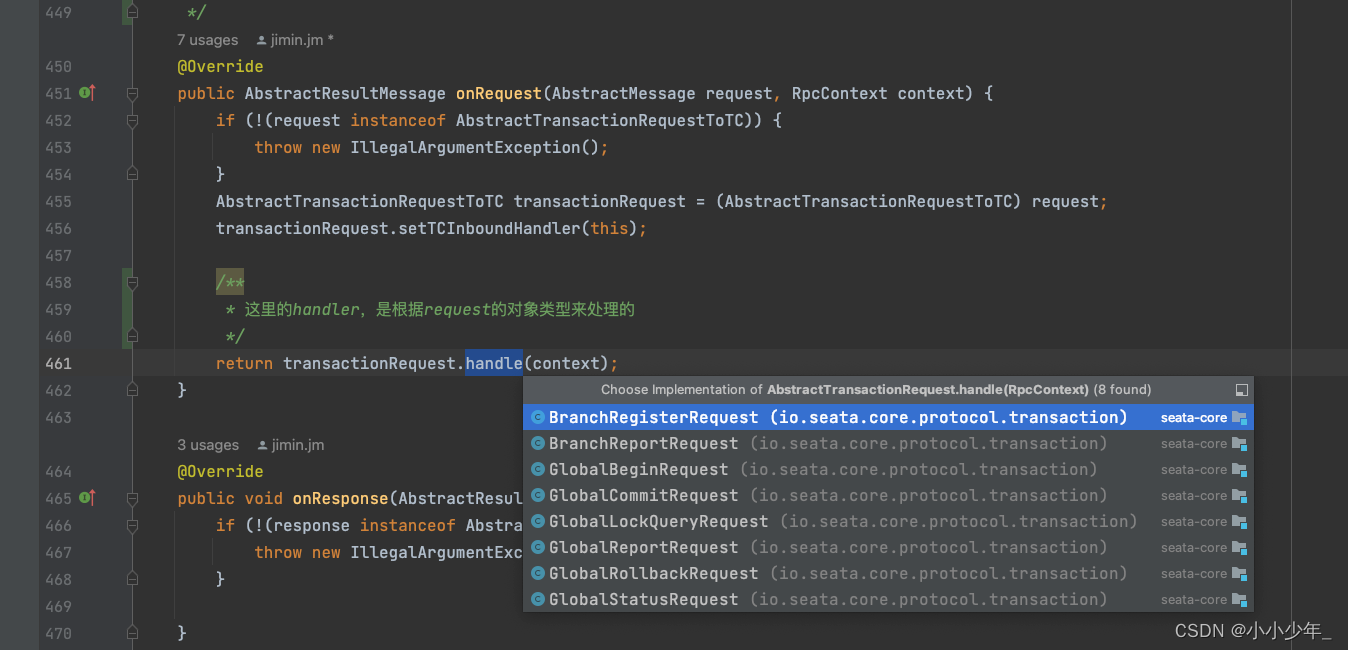
io.seata.server.AbstractTCInboundHandler#handle(io.seata.core.protocol.transaction.GlobalCommitRequest, io.seata.core.rpc.RpcContext)
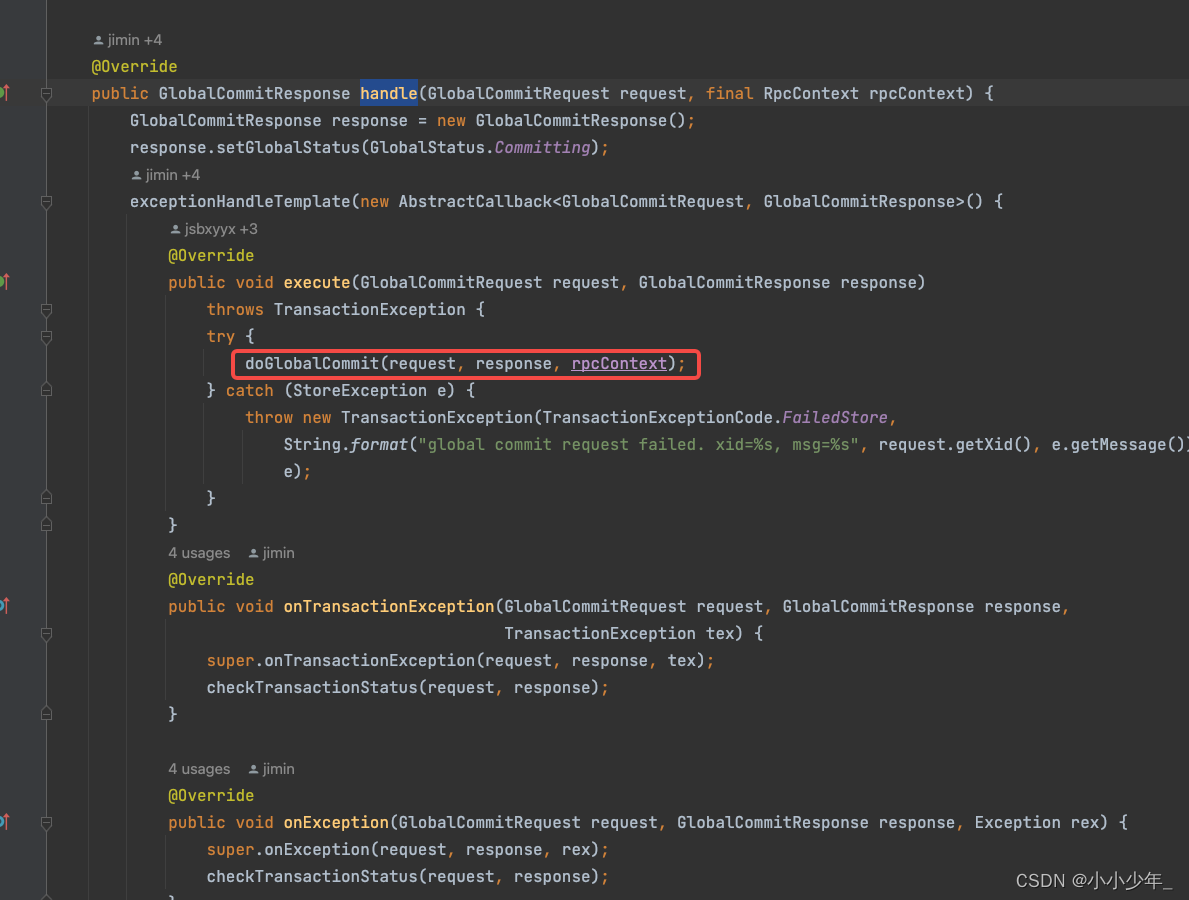
io.seata.server.coordinator.DefaultCoordinator#doGlobalCommit

上面也没有太多的业务逻辑,没什么好说的,我们直接来看core.commit()方法的逻辑
io.seata.server.coordinator.DefaultCore#commit
@Override
public GlobalStatus commit(String xid) throws TransactionException {
/**
* 1.获取全局session:globalSession
*/
GlobalSession globalSession = SessionHolder.findGlobalSession(xid);
if (globalSession == null) {
return GlobalStatus.Finished;
}
/**
* 2.给globalSession添加监听
*/
globalSession.addSessionLifecycleListener(SessionHolder.getRootSessionManager());
// just lock changeStatus
/**
* 3.对globalSession进行一些处理
*/
boolean shouldCommit = SessionHolder.lockAndExecute(globalSession, () -> {
// Highlight: Firstly, close the session, then no more branch can be registered.
/**
* 3.1 globalSession.setActive(false);将全局session的active设置为false
* 在clean()方法中会把lockTable中本次加锁的记录(分支事务相关锁信息)删除
*/
globalSession.closeAndClean();
if (globalSession.getStatus() == GlobalStatus.Begin) {
/**
* 对于AT模式,这里永远返回false
* 对于AT模式,这里会执行if的逻辑,将globalSession的status设置为AsyncCommitting
*/
if (globalSession.canBeCommittedAsync()) {
globalSession.asyncCommit();
return false;
} else {
/**
* 将globalSession的状态设置为committing状态
*/
globalSession.changeStatus(GlobalStatus.Committing);
return true;
}
}
return false;
});
/**
* 4.通知分支事务进行提交,如果是AT模式,不会进入到这里执行,因为shouldCommit是false
* 是通过一个异步线程来进行调用doGlobalCommit()方法的
*/
if (shouldCommit) {
boolean success = doGlobalCommit(globalSession, false);
//If successful and all remaining branches can be committed asynchronously, do async commit.
if (success && globalSession.hasBranch() && globalSession.canBeCommittedAsync()) {
globalSession.asyncCommit();
return GlobalStatus.Committed;
} else {
return globalSession.getStatus();
}
} else {
return globalSession.getStatus() == GlobalStatus.AsyncCommitting ? GlobalStatus.Committed : globalSession.getStatus();
}
}
上面贴的这段代码,是netty服务端接收到客户端全局事务请求之后,最核心的一个入口,我们拆开来看
commit
closeAndClean()
上面代码中注释1、2、3就不细看了,是一些不重要的逻辑,我们直接来看3.1这个注释对应的方法
在这个方法中,一个close()方法,一个clean()方法
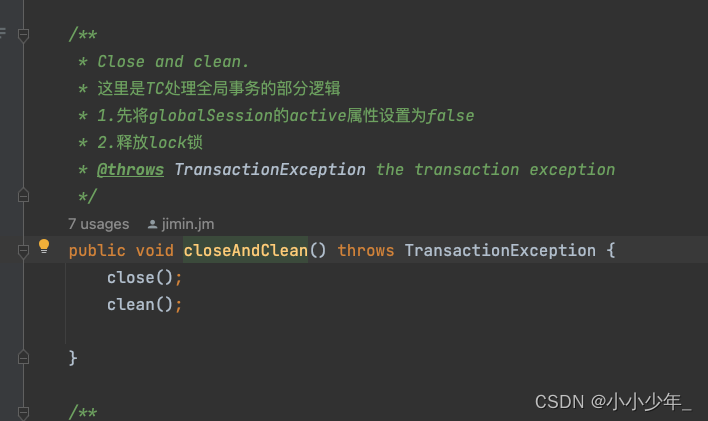
close()方法中的逻辑比较简单,就是把globalSession的active属性设置为了false

我们接着来看clean()方法:

clean()内部调用的这个方法,如果看过前面全局事务回滚的代码,就会发现这个代码很眼熟,就是把分支事务对应的lockTable中指定的加锁的资源进行释放
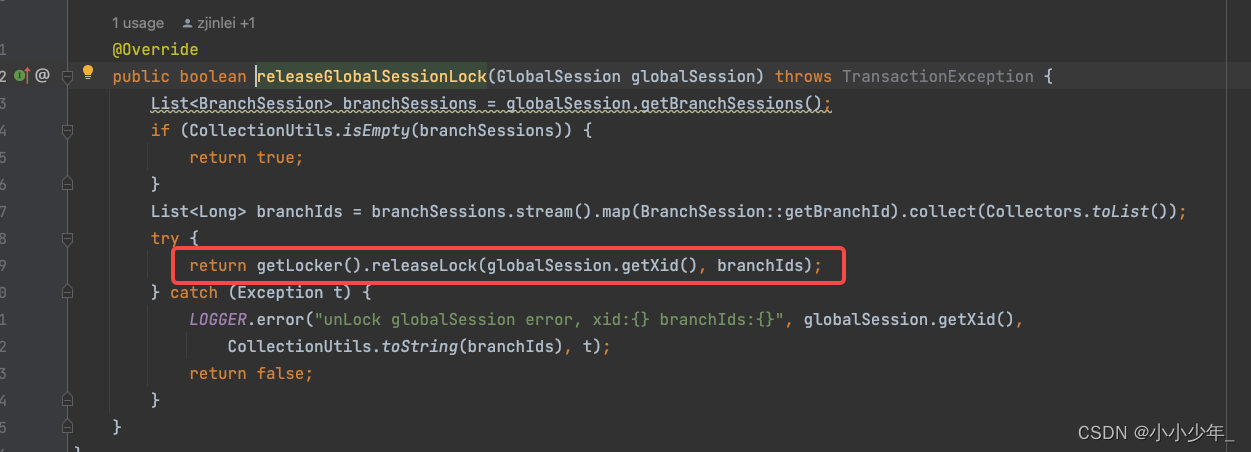
shouldCommit()
我们接着来看shouldCommit参数的赋值逻辑,可以着重看下第三点的注释,这里的shouldCommit参数,如果是AT模式,永远false,原因是在这里

在canBeCommittedAsync方法中,下面两张截图我们结合起来看,如果是AT模式,canBeCommitedAsync()返回的一定是true;如果这里返回true,那上面截图,一定会进入到if()的逻辑中
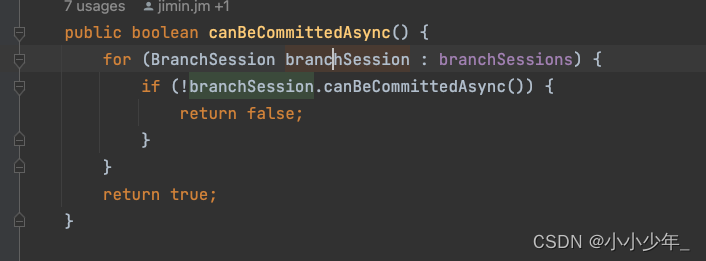

所以,对于AT模式,shouldCommit一定是false,并且会调用globalSession.asyncCommit();

这段代码的整体逻辑,就是说,如果当前事务是允许异步处理的,那就给shouldCommit赋值为false,同时把globalSession的status修该为AsyncCommitting;这个状态很重要,这里的意思,我认为是说,当前事务是需要异步处理的,当前代码中,就不同步处理了,接来下的逻辑,可以证明
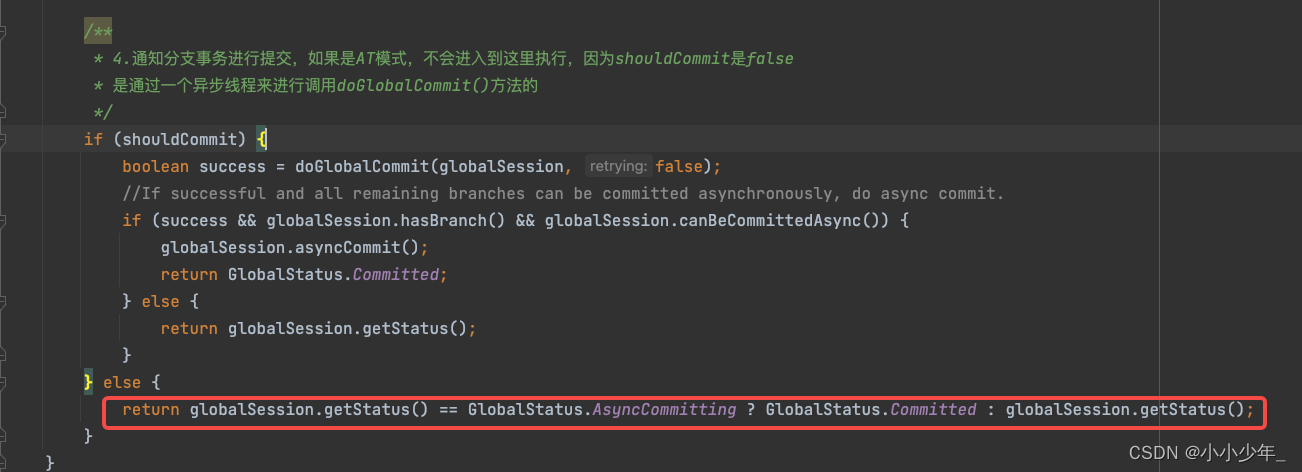
可以发现,当是AT模式的时候,直接执行了else的逻辑,那我们接下来看下,对于netty服务端,真正去处理分支事务的代码
init()
这段初始化的代码,和上面commit()有点关联,我们截止到这里,需要知道上面commit()方法,如果是AT模式的时候,只是把当前globalSession的状态改成了AsyncCommitting状态
io.seata.server.coordinator.DefaultCoordinator#init
这个方法,是在服务端启动的时候,会在这里初始化一批异步线程,其中有一个和本篇博客有关系

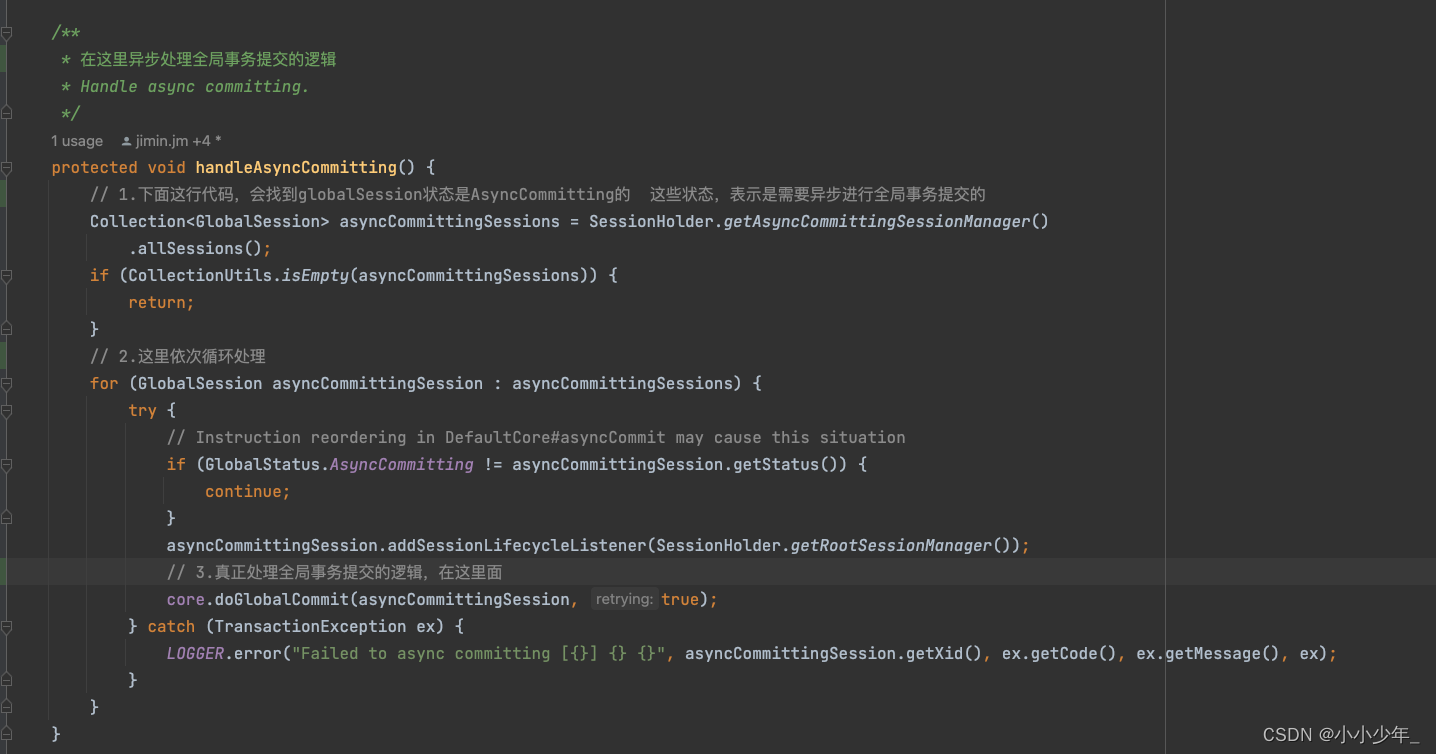
查找所有AsyncCommitting状态的globalSession
io.seata.server.storage.db.session.DataBaseSessionManager#allSessions


这里就不再继续往下贴代码了,逻辑比较简单,可以自己看下,简单来说,就是根据当前入参中的AsyncCommitting,从globalTable中,根据状态进行查询,然后找到所有待异步处理的globalSession
core.doGlobalCommit
io.seata.server.coordinator.DefaultCore#doGlobalCommit
这个方法,是服务端进行全局事务提交的处理逻辑,中间绕了这么一大圈,现在逻辑应该有点清晰明了了,其实就是在netty服务端接收到同步请求的时候,只会先把lockTable中加锁的数据删除,然后修改globalSession的状态,最后通过异步定时执行的线程池去执行全局事务提交的逻辑
public boolean doGlobalCommit(GlobalSession globalSession, boolean retrying) throws TransactionException {
boolean success = true;
// start committing event
eventBus.post(new GlobalTransactionEvent(globalSession.getTransactionId(), GlobalTransactionEvent.ROLE_TC,
globalSession.getTransactionName(), globalSession.getBeginTime(), null, globalSession.getStatus()));
if (globalSession.isSaga()) {
success = getCore(BranchType.SAGA).doGlobalCommit(globalSession, retrying);
} else {
for (BranchSession branchSession : globalSession.getSortedBranches()) {
// if not retrying, skip the canBeCommittedAsync branches
if (!retrying && branchSession.canBeCommittedAsync()) {
continue;
}
BranchStatus currentStatus = branchSession.getStatus();
/**
* 如果二阶段分支事务状态是失败,就无需执行下面的逻辑,直接remove即可
*/
if (currentStatus == BranchStatus.PhaseOne_Failed) {
globalSession.removeBranch(branchSession);
continue;
}
try {
/**
* 这里是服务端在全局事务提交的时候,会通知RM去对本地的branch事务进行处理,是通过netty去交互的
* 1.如果RM删除成功,就将branchSession移除,并释放锁
* 2.如果删除失败
*/
BranchStatus branchStatus = getCore(branchSession.getBranchType()).branchCommit(globalSession, branchSession);
switch (branchStatus) {
case PhaseTwo_Committed:
globalSession.removeBranch(branchSession);
continue;
case PhaseTwo_CommitFailed_Unretryable:
if (globalSession.canBeCommittedAsync()) {
LOGGER.error(
"Committing branch transaction[{}], status: PhaseTwo_CommitFailed_Unretryable, please check the business log.", branchSession.getBranchId());
continue;
} else {
SessionHelper.endCommitFailed(globalSession);
LOGGER.error("Committing global transaction[{}] finally failed, caused by branch transaction[{}] commit failed.", globalSession.getXid(), branchSession.getBranchId());
return false;
}
default:
if (!retrying) {
globalSession.queueToRetryCommit();
return false;
}
if (globalSession.canBeCommittedAsync()) {
LOGGER.error("Committing branch transaction[{}], status:{} and will retry later",
branchSession.getBranchId(), branchStatus);
continue;
} else {
LOGGER.error(
"Committing global transaction[{}] failed, caused by branch transaction[{}] commit failed, will retry later.", globalSession.getXid(), branchSession.getBranchId());
return false;
}
}
} catch (Exception ex) {
StackTraceLogger.error(LOGGER, ex, "Committing branch transaction exception: {}",
new String[] {branchSession.toString()});
if (!retrying) {
globalSession.queueToRetryCommit();
throw new TransactionException(ex);
}
}
}
//If has branch and not all remaining branches can be committed asynchronously,
//do print log and return false
if (globalSession.hasBranch() && !globalSession.canBeCommittedAsync()) {
LOGGER.info("Committing global transaction is NOT done, xid = {}.", globalSession.getXid());
return false;
}
}
//If success and there is no branch, end the global transaction.
/**
* 这里的sessionHelper.encCommitted会将globalSession中的记录删除
*/
if (success && globalSession.getBranchSessions().isEmpty()) {
SessionHelper.endCommitted(globalSession);
// committed event
eventBus.post(new GlobalTransactionEvent(globalSession.getTransactionId(), GlobalTransactionEvent.ROLE_TC,
globalSession.getTransactionName(), globalSession.getBeginTime(), System.currentTimeMillis(),
globalSession.getStatus()));
LOGGER.info("Committing global transaction is successfully done, xid = {}.", globalSession.getXid());
}
return success;
}
上面这段代码,是全局事务提交的逻辑,本质上,和全局事务回滚的逻辑,没太大的区别,只是底层一个调用的是commit,一个调用的是rollback;针对上面这段代码,我们需要着重关注的是:branchCommit这个方法,这个方法,我们下面单独说,先来看下这段代码的逻辑
- getCore(branchSession.getBranchType()).branchCommit(globalSession, branchSession); 通过这个方法,发起netty请求,通知各个分支事务,进行全局事务的提交
- 根据分支事务的返回状态,进行不同的处理;如果分支事务处理成功,在seata服务端这里,会把分支事务删除,并且把内存中的分支事务id删除(在seata服务端,每个全局事务都会维护一个集合,存储当前全局事务对应的所有分支事务)
- 在所有的分支事务,处理完毕之后,SessionHelper.endCommitted(globalSession); 通过这个方法,结束所有的逻辑,其实就是把globalSession从mysql数据库中删除
针对第二点和第三点,就不点进去细看了,其实本质上和全局事务回滚时,做的逻辑几乎上是一致的,我们主要来看下第一点,分支事务是如何处理分支事务提交的逻辑,因为这段逻辑和分支事务回滚的逻辑不一样
分支事务提交
io.seata.rm.datasource.AsyncWorker#branchCommit
这是rm这一端接收到分支事务提交的处理逻辑,但是我们会发现,这段代码很简单:

这里可以看到,只是将当前请求信息,塞到了一个queue中
io.seata.rm.datasource.AsyncWorker#init
这里可以看到,在rm启动的时候,会初始化一个定时执行的线程池,在这个线程池中,会定时的调用doBranchCommit()方法

io.seata.rm.datasource.AsyncWorker#doBranchCommits
private void doBranchCommits() {
if (ASYNC_COMMIT_BUFFER.isEmpty()) {
return;
}
/**
* 1.mappedContexts存储的是从阻塞队列中获取到的要处理的分支事务
*/
Map<String, List<Phase2Context>> mappedContexts = new HashMap<>(DEFAULT_RESOURCE_SIZE);
List<Phase2Context> contextsGroupedByResourceId;
while (!ASYNC_COMMIT_BUFFER.isEmpty()) {
Phase2Context commitContext = ASYNC_COMMIT_BUFFER.poll();
contextsGroupedByResourceId = CollectionUtils.computeIfAbsent(mappedContexts, commitContext.resourceId, key -> new ArrayList<>());
contextsGroupedByResourceId.add(commitContext);
}
/**
* 2.遍历mappedContexts
*/
for (Map.Entry<String, List<Phase2Context>> entry : mappedContexts.entrySet()) {
Connection conn = null;
DataSourceProxy dataSourceProxy;
try {
try {
DataSourceManager resourceManager = (DataSourceManager) DefaultResourceManager.get()
.getResourceManager(BranchType.AT);
dataSourceProxy = resourceManager.get(entry.getKey());
if (dataSourceProxy == null) {
throw new ShouldNeverHappenException("Failed to find resource on " + entry.getKey());
}
conn = dataSourceProxy.getPlainConnection();
} catch (SQLException sqle) {
LOGGER.warn("Failed to get connection for async committing on " + entry.getKey(), sqle);
continue;
}
contextsGroupedByResourceId = entry.getValue();
Set<String> xids = new LinkedHashSet<>(UNDOLOG_DELETE_LIMIT_SIZE);
Set<Long> branchIds = new LinkedHashSet<>(UNDOLOG_DELETE_LIMIT_SIZE);
/**
* 3.判断要处理的分支事务数量是否达到了批量处理的阈值
* 如果到了,就批量进行删除
* 否则的话,就清空xids和branchIds 然后return
*/
for (Phase2Context commitContext : contextsGroupedByResourceId) {
xids.add(commitContext.xid);
branchIds.add(commitContext.branchId);
int maxSize = Math.max(xids.size(), branchIds.size());
/**
* 并不是在每次全局事务提交的时候,就会执行下面的sql
* 而是在达到一定的阈值的时候,才会批量执行,阈值默认是1000
*
* 删除undoLog日志
*/
if (maxSize == UNDOLOG_DELETE_LIMIT_SIZE) {
try {
UndoLogManagerFactory.getUndoLogManager(dataSourceProxy.getDbType()).batchDeleteUndoLog(
xids, branchIds, conn);
} catch (Exception ex) {
LOGGER.warn("Failed to batch delete undo log [" + branchIds + "/" + xids + "]", ex);
}
xids.clear();
branchIds.clear();
}
}
if (CollectionUtils.isEmpty(xids) || CollectionUtils.isEmpty(branchIds)) {
return;
}
try {
UndoLogManagerFactory.getUndoLogManager(dataSourceProxy.getDbType()).batchDeleteUndoLog(xids,
branchIds, conn);
} catch (Exception ex) {
LOGGER.warn("Failed to batch delete undo log [" + branchIds + "/" + xids + "]", ex);
}
if (!conn.getAutoCommit()) {
conn.commit();
}
} catch (Throwable e) {
LOGGER.error(e.getMessage(), e);
try {
if (conn != null) {
conn.rollback();
}
} catch (SQLException rollbackEx) {
LOGGER.warn("Failed to rollback JDBC resource while deleting undo_log ", rollbackEx);
}
} finally {
if (conn != null) {
try {
conn.close();
} catch (SQLException closeEx) {
LOGGER.warn("Failed to close JDBC resource while deleting undo_log ", closeEx);
}
}
}
}
}
上面这端代码,我们可以看下,没1000ms执行一次,如果这1000ms之内,queue中待指定分支事务commit的请求达到了一定的阈值(UNDOLOG_DELETE_LIMIT_SIZE),就会执行commit请求(UndoLogManagerFactory.getUndoLogManager(dataSourceProxy.getDbType()).batchDeleteUndoLog(
xids, branchIds, conn););如果没有达到阈值,也会去执行commit的操作
UndoLogManagerFactory.getUndoLogManager 这里执行提交的逻辑,其实就是把undoLog数据给删除,因为对于全局事务提交时,其实在第一阶段,mysql已经真正执行了commit的操作,在第二阶段,只需要把undoLog给删除即可
总结
以上,就是全局事务提交的逻辑,整体看下来,我们可以发现,对于全局事务提交的时候,分支事务在处理的时候,是异步来处理的,这是和回滚逻辑有很大的区别,因为上篇博客中,我们有看到,全局事务回滚时,分支事务在第二阶段,是同步处理的,在接收到请求之后,会根据undoLog生成回滚sql,并执行,然后删除undoLog数据,但是对于全局事务提交的第二阶段,会发现,接收到请求之后,直接塞到了队列中,通过异步的请求,没1000ms执行一次提交的逻辑
